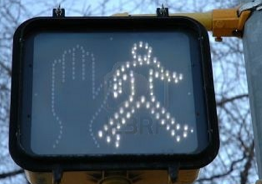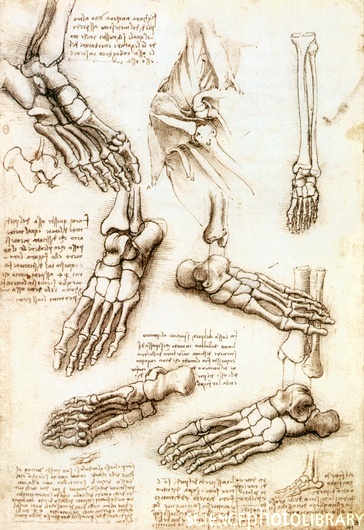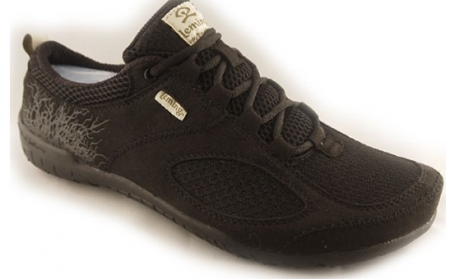Half of the customers who enter Two Rivers Treads in Shepherdstown, West Virginia have no interest in running or buying running shoes. That’s because we are not exclusively a “minimalist running store”. We also carry shoes for walkers and hikers. We want people moving and there is no safer, accessible, and natural movement than walking.
All runners walk and I firmly believe that better walking movement with thinner or no footwear strengthen the foot and align the posture for better running.
So walk right before you run.
A recent video titled “23 ½ hours ” (see above) by Dr. Mike Evans expertly lays the case for the minimum daily requirement of a half hour a day of movement (walking), even if you spend the rest of the day in sedentary activity. (See 2:14 in video.) All the scientific studies come to the same conclusion: walking can increase your lifespan, prevent disease, including heart disease, diabetes, and cancer; it can also improve your overall cognition function and mood.
 More people walk for exercise than any other activity. What better way to get into great shape and enjoy your natural surroundings? Many wanting to start or increase their enjoyment of this simple activity are surprised when I tell them there is an efficient walking technique. Let’s go through some simple steps.
More people walk for exercise than any other activity. What better way to get into great shape and enjoy your natural surroundings? Many wanting to start or increase their enjoyment of this simple activity are surprised when I tell them there is an efficient walking technique. Let’s go through some simple steps.
Let’s begin with posture because it is the single most important factor in developing good walking form. When your posture is aligned properly, its structure and not your muscles support your body weight. Standing and walking out of alignment can create fatigue and pain.
Good posture is a straight line that runs between your shoulder, hip, and ankle. Very little energy is needed to support it in this position. Now if you tilt it just a little, significant muscle usage is needed. The same thing occurs in your column when you are out of alignment. The most common posture we see today is the “texting position”—head and shoulders hunched forward, spine out of it natural tall position.
Now let’s set your posture: lengthen and align. Imagine yourself getting tall by elevating from a string pulling up what men commonly have as the bald spot (the occiput). Or imagine two strings pulling straight up– one attached to the nape of your neck and the other to an imaginary zipper on your sternum. Reach for an imaginary cookie jar on a high shelf that you can almost reach. Your spine is now elongated. To check your alignment you can look in a mirror from the side. Connect the dots of your ear, shoulder, hip, and ankle. Have a partner try to pull you down from the shoulders. If you collapse back then tilt your torso slightly forward from the hips and recheck.
 Now let’s go to the feet. Leonardo da Vinci called the foot a “masterpiece of engineering”. Balance on the “tripod” of your foot: the inner and outer edge of the ball and the heel. Try to align your feet forward and balance under your hips, thigh width apart. Do not lock your knees. Have a soft and gentle bend. Balance on one foot several times a day.
Now let’s go to the feet. Leonardo da Vinci called the foot a “masterpiece of engineering”. Balance on the “tripod” of your foot: the inner and outer edge of the ball and the heel. Try to align your feet forward and balance under your hips, thigh width apart. Do not lock your knees. Have a soft and gentle bend. Balance on one foot several times a day.
Your heel is a ball meant to roll forward. One of the most inefficient ways to walk is by locking your knee and hitting with the back side of your heel. Think as if your heel is a soccer ball and the area of the heel that is going to contact the ground is the bottom and roll forward from there. Your weight should move from heel to big toe, but think of it more as a smooth heel roll than a jolting heel strike. Your knee remains bent.
Lean gently from ankles. Your legs do not lead. Lead from the torso, not the head. This is a strange feeling as you start but one that feels fluid and natural as you progress. Think of a wheel — upper body going gently forward and legs going behind.
Use powerful posterior muscles, especially your gluteus maximus, to press down and back. These muscles are large, strong and resist fatigue. Rotate and twist from midsection. This is your T12/L1 area, which is located at the bottom of your ribcage.
Swing yours arms swing to and fro to facilitate the twist, this will happen naturally. Relax hands and do not cross center line. Do not vigorously pump your arms either, but allow the natural stretch and return to happen as your arms swing like a pendulum from the shoulders.
To get started:
- Lengthen your spine (strings as above).
- Lean slightly forward from the ankles (imagine a winch pulling the sternum forward gently).
- Push your right foot down and back into the ground, using your glutes.
- Finishing with propulsion from your toes.
- Your left leg will naturally lift and step forward.
- Your stride may feel shorter than before, but gain the length by extending the leg behind you.
- Feel and practice the slight push. The lean produces a force in the proper vector- down and back. The opposite reaction is a movement up and forward.
- It will soon be smooth and springy. Practice barefoot in your house or a smooth surface at first.
- Feel the propulsion of toes, especially the large toe. Use your toes- small and strong. Engage them to propel you. Without using your toes you must throw your heel forward, encouraging a locked knee when you land the next step.
So you want to walk faster? In walking your amount of elbow bend will control your cadence (number of steps per minute). In a nice relaxed saunter (window shopping) your elbows will be straight and steps about 50-60 per minute. Now bend elbows to about 45 degrees and watch your step count pick up to 60-65 per minute. For the real fitness walk you can go even quicker and bend your arms to 90 degrees to achieve a step count of over 65. Practice and feel it. Many fitness programs incorporate mixing running and walking in the daily sessions. I encourage this and one can keep the heart rate and speed up by using the quick walking cadence.

Now for a little on walking footwear. Buddha once said “The foot feels the foot when it feels the ground”. Your healthcare provider or big box shoe store may have told you “get a cushioned and supportive walking shoe with good arch support”. I would disagree with this statement as your foot provides significant propulsion to your walking stride. Many have been told they have “fallen arches” or what may be described better as “failing arches” from years of disuse. This can be reversed in most people with patience and practice.
Examples of improper walking shoes are the Reebok “toning shoes” that were recently held liable in a $25 million lawsuit for false weight-loss claims. Other shoes which have a stiff rocker shape sole essentially create instability and roll your foot forward, removing all the foot’s muscular action and propulsion.

Instead, progress into a thin, flexible, and flat shoe with a wide toe box and you will rediscover your foot’s connection to the ground and why it is so critical to walking movement. Walk barefoot in your home as much as possible to strengthen your foot and lower leg tissues. Some may have a condition that necessitates a supportive shoe so talk with your health provider about this. Almost all can slowly and progressively get into thinner shoes and once they do never go back.
Avoid shoes with elevated heels too as this negatively affects foot balance and posture and encourages the hard heel hit with the foot out in front. Elevating the heel throws your body and compensations occur in every joint from your ankle, knee, hip and up to the back. It also encourages more active muscle use.
A somewhat recent (and fascinating) article in the New York Times “A Scientific Look at the Dangers of High Heels” highlights some current research on walking mechanics and foot wear effects. Like running, walking is all about elasticity and using the tendons to spring and recoil. When you walk in heels you use more muscles and less spring, even when you throw your shoes off. My conclusion and the one shared by the author is that we need to reset the foot’s “default” position to flat and train your feet and gait all day.
There are some fun accessories for walking if you need motivation. Pedometers are inexpensive and count number of steps. For most 2.000 steps is about mile and the goal is to increase your step count ideally to 10,000 a day. GPS watches with measure distance with amazing accuracy. Heart rate monitors are also a nice tool to gauge effort and to see your fitness progression.

Thank you Dr. Mark for a tremendous article (and the video from Dr. Mike Evans). I’m training for a half-marathon to be held in Toronto on October 14th, 2012 – using Dr. Maffetone’s holistic method. Currently I making a transition from a walking gait to the running gait. This article is very timely helpful to me! This website has been a source of inspiration and guidance for me. Thanks very much!!!
thanks Ramesh! too bad you cannot come to our event wih Phil May 15. Mark
Instead, progress into a thin, flexible, and flat shoe with a wide toe box and you will rediscover your foot’s connection to the ground and why it is so critical to walking movement.
I’ve been wearing Lemings (used to be Stem) for 4-5 weeks and the above describes them perfectly. They are the most comfortable shoes I’ve ever worn. Almost like walking barefoot.
I love it Mark! I have been trying to get people to understand that how we stand will dictate how we walk, which will ultimately dictate how we run.
“First learn how to move well, then move often” -Gray Cook, PT
hi mark,
what shoes do you recommend for hiking and backpacking? I am a runner and have been running in vivobarefoot shoes for over a year. this summer I plan to climb some fourteeners. I have not done this kind of activity since I sterted wearing minimalist shoes. I have a clunky pair of hiking boots in my closet and DO NOT feel compelled to wear them. what are your suggestions?
Nesha
Aloha Dr. Mark,
Is there shoes available for those with wide feet 4EEEE? For several weeks, I have been walking a 3 mile loop in slippers with no problems. My feet and legs feel good.
Mahalo,
Mark
4EEEE? best best would be sandals or Xero (Invisible) shoes.
Mark
The Vasque boots were perfect for climbing/scrambling and hiking. The key was to break them in gradually. My pair saved my ankles several times from sharp rocks which the flimsy low cut shoes you show which would be great for technical climbing. The lug soles were super durable and were designed for rough outdoor conditions, snow especially.